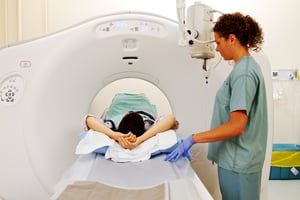Top Children’s Hospital Assesses AV Access Flow Monitoring
 Although ultrasound dilution (UD) monitoring of AV access flow is widely used in adult HD units for early stenosis detection, its experience in pediatric units is limited. Therefore, a group at Boston Children’s Hospital conducted a study to evaluate the impact of UD monitoring on AV access-related morbidity, especially access thrombosis.
Although ultrasound dilution (UD) monitoring of AV access flow is widely used in adult HD units for early stenosis detection, its experience in pediatric units is limited. Therefore, a group at Boston Children’s Hospital conducted a study to evaluate the impact of UD monitoring on AV access-related morbidity, especially access thrombosis.
Secondary morbidity outcomes were also evaluated, including access-related hospitalizations and need for new access creation or temporary dialysis catheter placement.
Researchers evaluated UD monitoring to screen for hemodynamically significant AV stenosis by:
- Differentiating between patent AV accesses and those at true risk to thrombose.
- Detecting improvements in blood flow to restore patency after interventional procedures.
- Determining UD’s sensitivity and specificity for detecting stenoses vis á vis fistulagrams.
They found that:
- AV access thrombosis rates fell from 13.5 per 100 patient-months on HD during the baseline period to 3.5 per 100 patient-months on HD during the screening period (p < 0.04).
- Secondary complications (hospitalizations, new access creation, temporary dialysis catheter placement) declined from 4 events per 100 patient-months during baseline period and to 2.5 events per 100 patient-months during surveillance period.
- Mean blood flow rate by UD measurement was lower in AV accesses that went on to thrombose compared with those without thrombosis (1,203 ml/min/1.73 m2 vs. 1,683 ml/min/1.73 m2, p < 0.001).
- Following angioplasty, median flow rate increased from 730 ml/min to 1,180 ml/min.
- When compared to fistulagrams, UD surveillance was 94% sensitive and 77% specific in detecting hemodynamically significant stenosis, with positive and negative predictive values of 83% and 91% respectively.
The group concluded that UD screening is sensitive in detecting hemodynamically significant stenosis and can decrease AV access thrombosis rates in children.
Reference:
Ashoor IF, Hughson EA, Somers MJ, “Arteriovenous access monitoring with ultrasound dilution in a pediatric hemodialysis unit.” Blood Purif. 2015;39(1-3):93-8. (Transonic Reference: HD10296AH)




